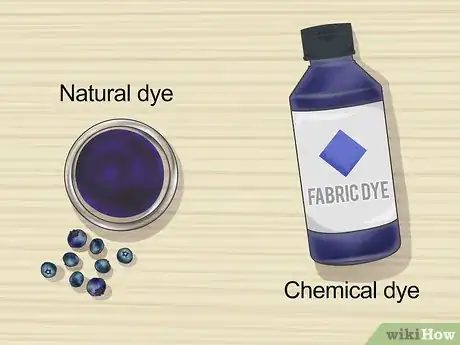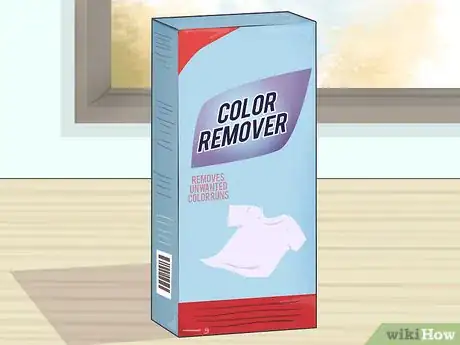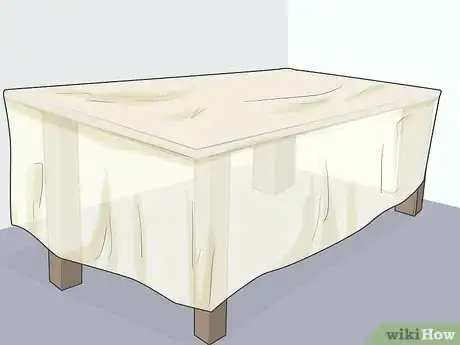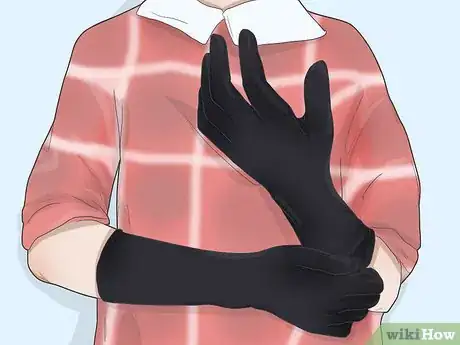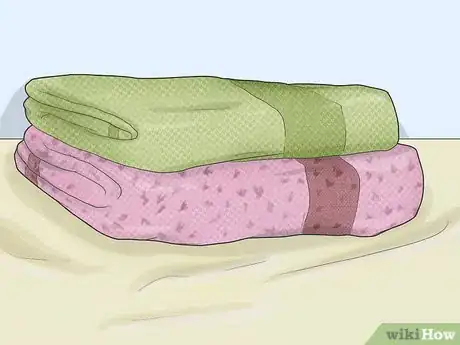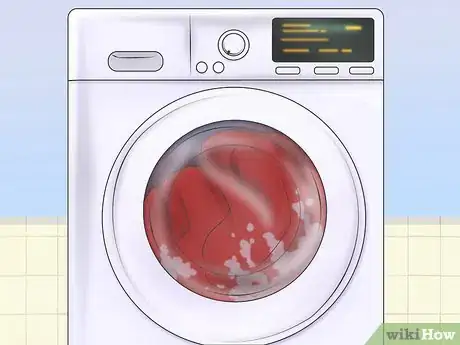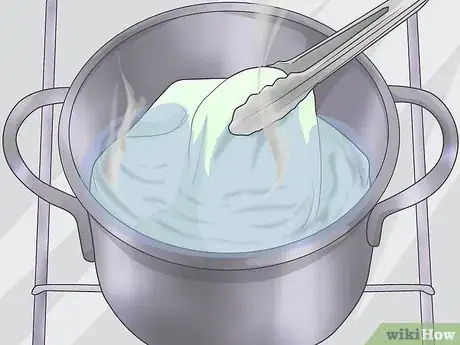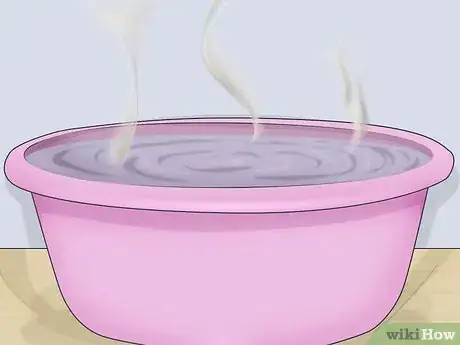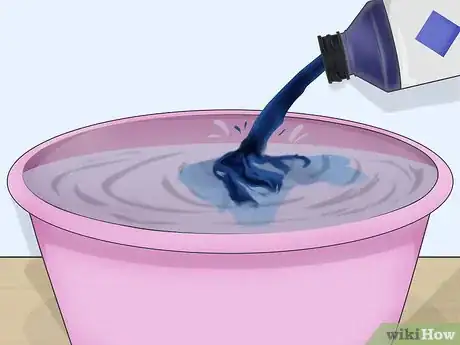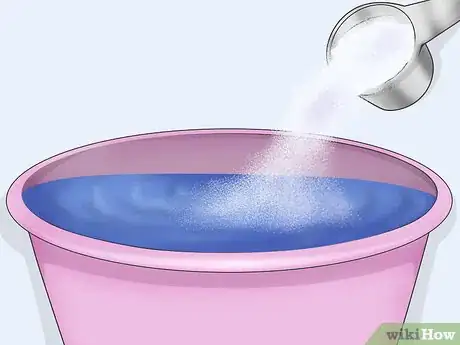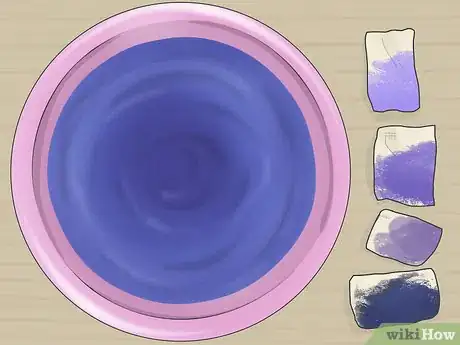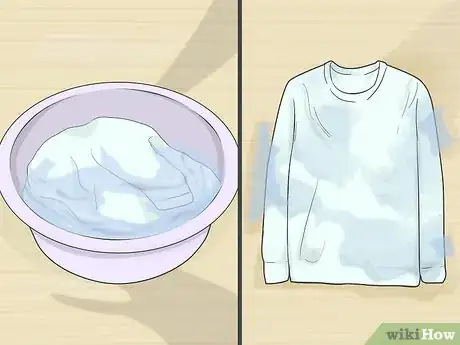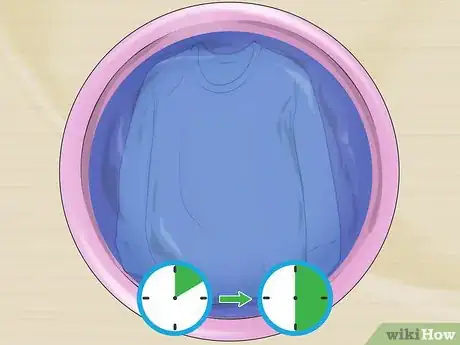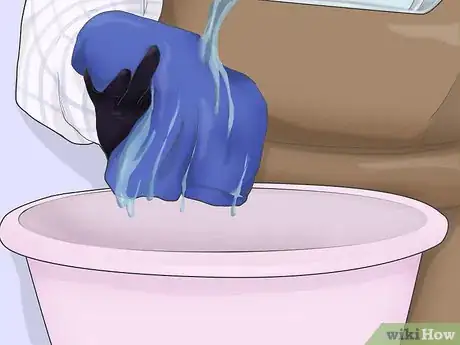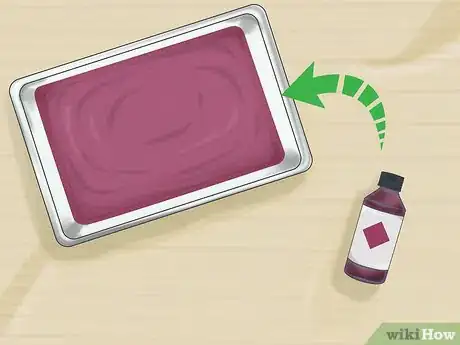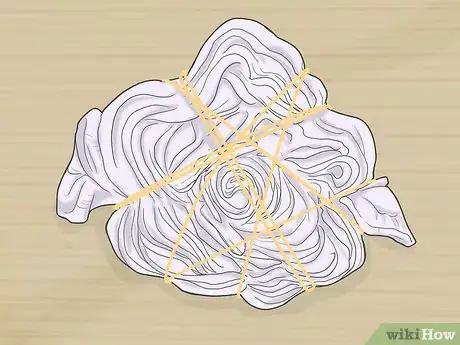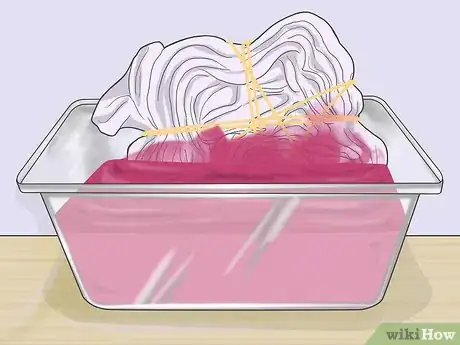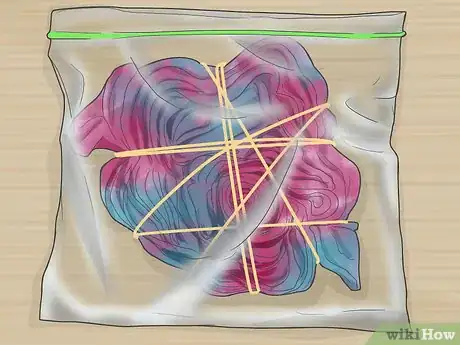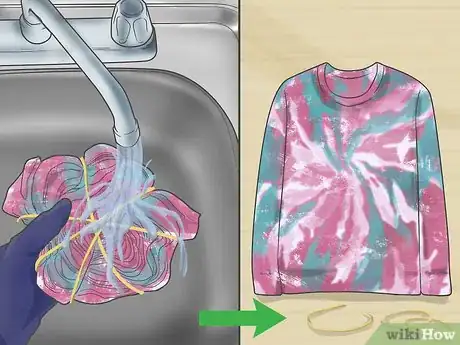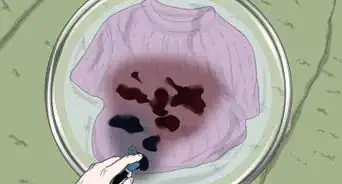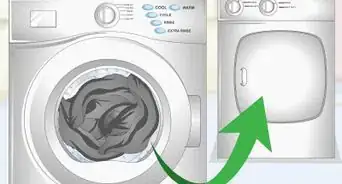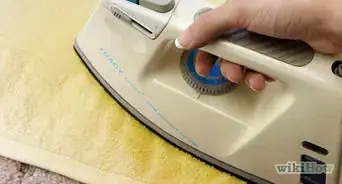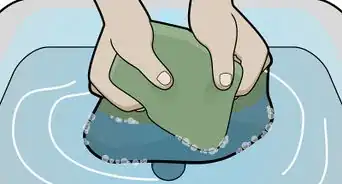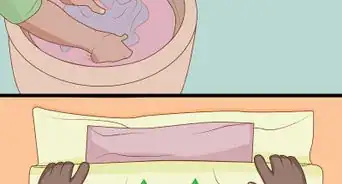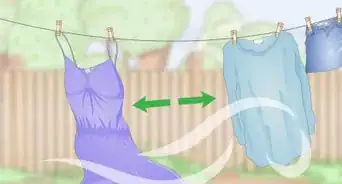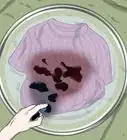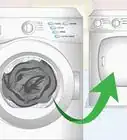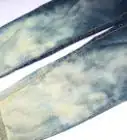This article was co-authored by wikiHow staff writer, Amy Bobinger. Amy Bobinger has been a writer and editor at wikiHow since 2017. She especially enjoys writing articles that help people overcome interpersonal hurdles but frequently covers a variety of subjects, including health and wellness, spirituality, gardening, and more. Amy graduated with a B.A. in English Lit from Mississippi College in 2011 and now lives in her hometown with her husband and two young sons.
There are 14 references cited in this article, which can be found at the bottom of the page.
This article has been viewed 61,354 times.
Learn more...
A cozy sweatshirt that's perfectly broken in is one of the most comfortable clothing items you can own. Unfortunately, sweatshirts can fade or become stained, making them unsightly to wear in public. You might even find one on sale but you don't like the color. If you want to save your sweatshirt, try dyeing it! Whether you want to give new life to your favorite hoodie or you want to turn a thrift-store find into fashion, you can easily dye a sweatshirt at home.
Steps
Preparing Your Workspace
-
1Choose your dye. Decide what color you want your sweatshirt to be and whether you are using chemical or natural dye. You can purchase chemical dye from most major retailers as well as specialty fabric stores. Gather plant materials in the color you want if you are using natural dye.[1]
- A medium- to heavy-weight sweatshirt will likely need about one box of powder dye or 1/2 bottle of liquid dye, but that amount may be doubled for darker shades.[2]
- If you are planning to use natural materials to dye your clothes, gather food materials in the color you want. For instance, beets can be used to dye your sweatshirt red, while carrots can be used to get an orange color.[3]
- When choosing a color, remember that the base shade of your sweatshirt will affect the final color. For instance, if you try to dye a yellow sweatshirt blue, it will probably end up green.
-
2Buy a prepared color remover if you want to dye your sweatshirt a lighter color. Lighter color dyes will not show up on a dark sweatshirt, so you'll have to lighten it first. To lighten your sweatshirt, treat it with a commercially-prepared color remover, which you can find almost anywhere you find fabric dye. One box should be sufficient for this project.[4]
- Do not use bleach. Bleach can damage the fibers of your sweatshirt, which may prevent them from accepting dye.[5]
Advertisement -
3Cover your work surfaces with a dropcloth or tarp. Fabric dye is powerful, and it can permanently stain your tables or floors. Be sure that you are protecting all of your work surfaces with a covering that is made of a non-absorbent material, or you'll be facing a challenging cleanup.[6]
-
4Wear heavy rubber gloves. Fabric dye can stain your skin, so be sure to wear heavy rubber gloves. You'll also be working with hot water, and some people are sensitive to dyes, so it's important to protect your skin.
-
5Have an old towel nearby to wipe your hands. You'll want to have this close before you get started. The last thing you want is to have to go looking for supplies after your hands are covered with dye, so go over your material list to be sure.
-
6Wash and dry your sweatshirt before you start the dyeing process. You'll need to wash your sweatshirt in regular detergent before you dye it. Do not dry your sweatshirt after washing it. It needs to be wet for the dyeing process. [7]
Performing a Basic Dye Job
-
1Treat your sweatshirt with color remover if you are lightening it. Follow the instructions on the color remover package, which should resemble the same steps you will take to dye your sweatshirt. Leave the shirt in the color remover until you achieve your desired shade. The end result should be an even base color which is lighter than the color you wish to dye the sweatshirt.[8]
-
2Fill a large pot or plastic tub with hot water. Hot water will help relax the fibers of your sweatshirt, helping them to absorb more dye. You can use hot water from your tap or you can the boil water first and add it to your container.[9]
- The instructions on most fabric dye says that you can perform the process in a sink or washing machine. However, if it's your first time dyeing anything it's best to use a large pot or a plastic tub, since the dye can stain whatever it touches.
-
3Add dye to hot water. If you're using powdered dye, dissolve 1/2 box of the powder in a cup or bottle of very hot water, then add it to your larger container. This will help ensure even distribution of color. If you are using liquid dye, shake the container very well before adding the entire bottle to your tub of hot water. Stir the mixture to make sure the dye is mixed evenly.[10]
- If you are using natural plant material to dye your clothes, chop the plants up into about 1 inch (2.5 cm) pieces and add them to a pot of water on the stove. Bring the water to a boil, then simmer on low for about an hour. Strain the plant material out of the water before using.[11]
-
4Add 1 cup of salt to the hot water. Dissolve 1 cup of salt in hot water, then add that to your mixture. Salt helps the dye to set in the fabric. Salt is generally recommended for dyeing cotton (which most sweatshirts are made from), but you can also use a cup of vinegar.[12]
- Skip this step and soak your sweatshirt in cold water with 1/4 cup of salt added if you are using berries as a dye, or 4 parts cold water and 1 part vinegar if you are using any plant material other than berries.[13]
-
5Test your dye color with a paper towel or scrap of fabric. If the color seems too light, add more dye. If it seems too dark, add more water. Remember, you will should try to get your sweatshirt just a little darker than the shade you want, since some of the dye will fade the first time you wash the sweatshirt.[14]
-
6Wet the sweatshirt with warm water. By wetting the fabric with warm water, the fibers of the sweatshirt will be relaxed and will take the dye more easily. Wring out any excess water, then smooth out any wrinkles.[15]
-
7Submerge the sweatshirt into the dye bath for 10-30 minutes. Constantly stir the sweatshirt in the dye with a large metal spoon, but do not allow it to become twisted or the dye will soak in unevenly. You should leave the garment in the dye for 10 to 30 minutes, depending on the richness of color you are trying to achieve.[16]
-
8Remove the item from the dye and rinse it in warm water. Gradually reduce the temperature of the water until it is cool. Keep rinsing until the water runs clear. You can also rinse your sweatshirt by running it through your washing machine's cold rinse cycle.[17]
-
9Dry your sweatshirt by itself or with similar colors. Either hang your sweatshirt up to dry or put it in the dryer with similar colors. If you have fully rinsed all of the dye from the garment, there should be little to no color transfer in the dryer, but some of the dye may seep out when you wash the sweatshirt again, so wash it by itself or with like colors the first few times after you dye it.[18]
-
10Clean up immediately. The longer dye sits, the harder it is to remove. Wipe up any spills with paper towels and use a bleach spray if necessary.[19]
Tie-Dyeing Your Sweatshirt
-
1Soak your sweatshirt in warm water and wring it out. Wet fibers absorb dye more easily than dry ones. Make sure your sweatshirt is thoroughly soaked, then wring out any excess water. You can also use this step to wash your sweatshirt to make sure there aren't any fixatives, dyes, or fabric softener residues in the material that will affect color saturation.
-
2Mix your dye and add it to a large pot or plastic bin. Follow the directions on the dye package to determine how much water you should add to the dye. Add about a cup of salt to the dye bath to help the color set in.[20]
-
3Fold, twist, or tie your sweatshirt into a pattern. Experiment with different ways of manipulating the fabric for different tie-dye effects. Use rubber bands to tie off sections of your sweatshirt, making sure to secure it tightly so the dye doesn't bleed.
- You can get different looks by folding, swirling, and crinkling your shirt.
- Use multiple rubber bands in the same area to get a bulls-eye effect.[21]
-
4Dip the sweatshirt into the dye mixture. Your sweatshirt should be immersed in the dye for about 10-30 minutes, depending in the color you're trying to achieve. Leave it in less time for a lighter color or more time for a deeper shade.[22]
- If you're dying your shirt more than one color, you'll need to hold each section in the dye for the required amount of time.
-
5Place your sweatshirt in a plastic bag and allow it to soak overnight. This takes a little patience, but it really allows the dye to spread into the folds of fabric and create those cool tie-dye effects.
-
6Rinse your sweatshirt in cool water, then remove the rubber bands. After allowing your fabric to rest overnight, rinse the dye out with cool water until the water runs clear. After it is thoroughly rinsed, cut off the rubber bands and see your new masterpiece!
Things You'll Need
Basic Dyeing Method
- A sweatshirt
- Gloves
- Large pot or plastic tub
- Hot water
- Fabric dye (liquid, powder, or natural materials)
- Large metal spoon
- Salt or vinegar
- Paper towels
- Dropcloth, tarp, or other protective covering
- Old towels
- Bleach
For Natural Dyes
- Stockpot
- Colander
For Tie Dye
- Rubber bands
References
- ↑ http://thismamamakesstuff.com/2008/09/diy-dyeing/
- ↑ http://living.thebump.com/dye-faded-clothes-11091.html
- ↑ https://www.diynatural.com/natural-fabric-dyes/
- ↑ http://www.pburch.net/dyeing/FAQ/discharge_chemicals.shtml
- ↑ http://www.thefrugalgirl.com/2017/05/does-rit-dye-work-on-bleach-stains/
- ↑ https://www.craftsy.com/blog/2013/08/dyeing-clothes/
- ↑ http://www.ssww.com/blog/tricks-and-tips-for-tie-dying/
- ↑ http://www.pburch.net/dyeing/FAQ/discharge_chemicals.shtml
- ↑ http://www.madeeveryday.com/2008/07/tutorial-easy-fabric-dyeing.html/
- ↑ http://www.ssww.com/blog/tricks-and-tips-for-tie-dying/
- ↑ http://pioneerthinking.com/natural-dyes
- ↑ http://article.sapub.org/10.5923.j.textile.20170601.02.html
- ↑ https://www.diynatural.com/natural-fabric-dyes/
- ↑ http://thismamamakesstuff.com/2008/09/diy-dyeing/
- ↑ https://www.good.is/articles/do-it-yourself-dye-fabric-the-right-way-30daysofgood
- ↑ https://www.good.is/articles/do-it-yourself-dye-fabric-the-right-way-30daysofgood/
- ↑ https://www.good.is/articles/do-it-yourself-dye-fabric-the-right-way-30daysofgood
- ↑ https://www.good.is/articles/do-it-yourself-dye-fabric-the-right-way-30daysofgood
- ↑ http://living.thebump.com/dye-faded-clothes-11091.html
- ↑ http://www.parents.com/fun/arts-crafts/kid/tie-dye-with-kids/
- ↑ http://www.parents.com/fun/arts-crafts/kid/tie-dye-with-kids/
- ↑ http://www.parents.com/fun/arts-crafts/kid/tie-dye-with-kids/
- ↑ https://www.fabric.com/blog/diy-dip-dye-sweatshirt/
